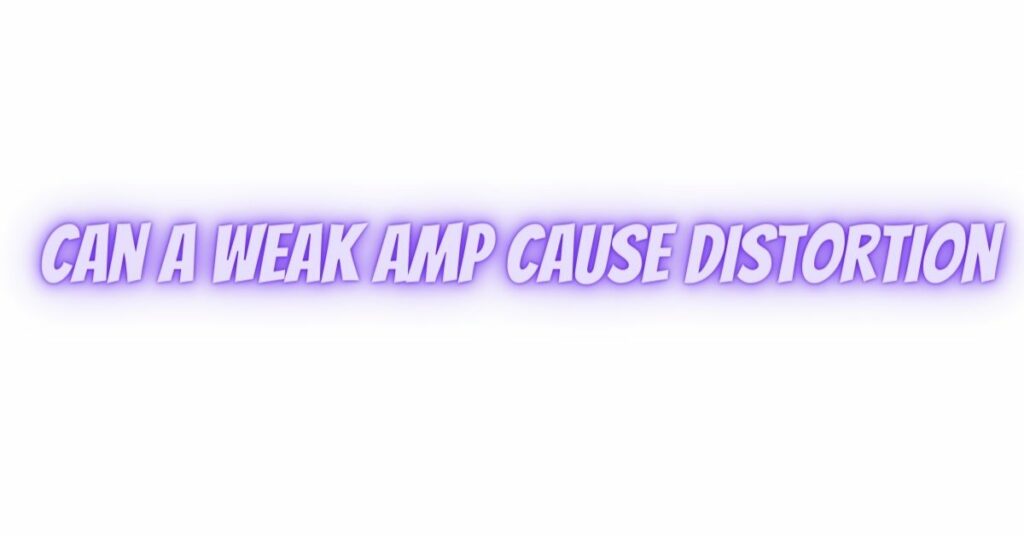Audio enthusiasts and professionals often strive for the highest possible sound quality when setting up their audio systems. One common concern that arises in this pursuit is the potential for distortion in audio playback. One question frequently asked is whether a weak amplifier can cause distortion in an audio system. In this comprehensive article, we will explore the relationship between amplifier power and distortion, examine the factors that contribute to distortion, and offer insights into how to prevent or mitigate distortion in audio systems.
The Role of Amplifiers in Audio Reproduction
Amplifiers play a critical role in audio reproduction by taking a weak audio signal from a source component (e.g., a CD player or a turntable) and boosting it to a level that can drive speakers or headphones to produce sound at the desired volume. Amplifiers are rated in terms of power output, typically measured in watts, and impedance matching, which ensures compatibility with the connected speakers.
Understanding Distortion in Audio
Distortion in audio refers to any alteration or corruption of the original audio signal during amplification or playback. It can manifest in various forms, including harmonic distortion (resulting in the addition of unwanted harmonics), intermodulation distortion (causing the mixing of different frequencies), and transient distortion (affecting the accuracy of rapid signal changes).
Can a Weak Amplifier Cause Distortion?
The strength of an amplifier alone does not directly cause distortion. However, the relationship between the amplifier’s power output and the demands of the connected speakers can lead to distortion in certain scenarios. Here’s how it works:
- Clipping Distortion: When an amplifier is pushed beyond its capabilities and is unable to provide enough power to drive the speakers to the desired volume level, a phenomenon known as “clipping” occurs. Clipping distortion is characterized by the flattening or “clipping” of the peaks of the audio waveform, resulting in distortion and a harsh, unpleasant sound. This distortion is more likely to occur with a weak amplifier that cannot meet the power demands of the speakers.
- Speaker Damage: In extreme cases, when an amplifier is severely underpowered for a set of speakers, the amplifier may not only produce distorted audio but also risk damaging the speakers. This happens because the amplifier is pushed to its limits, and the resulting high levels of distortion can lead to excessive heat and mechanical stress on the speaker drivers.
Preventing or Mitigating Distortion:
To prevent or mitigate distortion caused by a weak amplifier, consider the following strategies:
- Match Amplifier Power to Speaker Requirements: Ensure that the amplifier’s power rating matches the power requirements of the connected speakers. This avoids overloading the amplifier and reduces the risk of distortion.
- Use Efficient Speakers: Choose speakers with sensitivity ratings that match your amplifier’s output. More sensitive speakers require less power to achieve a given volume level, reducing the likelihood of distortion.
- Avoid Overdriving the Amplifier: Be mindful of the amplifier’s limits and avoid turning the volume up to levels that cause clipping. Opt for a more powerful amplifier if necessary.
- Use a Subwoofer: Adding a subwoofer to your audio system can offload some of the bass demands from the main speakers, allowing the amplifier to operate more efficiently and reducing the risk of distortion.
- Quality Source Material: Start with high-quality source material, as poorly recorded or compressed audio files can introduce distortion at the source.
Conclusion
While a weak amplifier itself does not cause distortion, the mismatch between the amplifier’s power and the demands of the speakers can lead to distortion, particularly in the form of clipping distortion. To ensure optimal audio quality and prevent distortion, it’s essential to select amplifiers and speakers that are well-matched in terms of power and sensitivity. By following these guidelines and using the right components for your audio system, you can enjoy clean, distortion-free sound reproduction.


